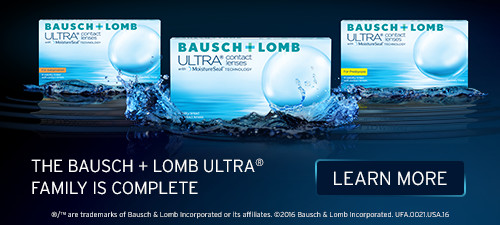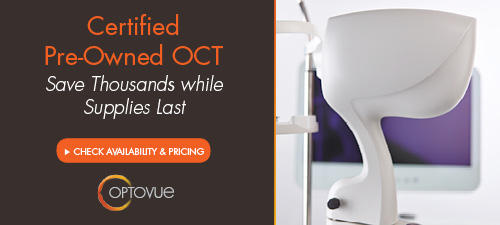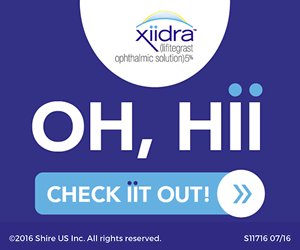
A
weekly e-journal by Art Epstein, OD, FAAO
Off the Cuff: AOA
As many of you may recall, the AOA and I haven't always agreed. Still, I recognize the critical importance of a strong national organization, which is why I have been an AOA member for virtually my entire career. That said, the AOA’s past intolerance of healthy dissent is one of the reasons I've written relatively little about the organization over the recent past. With attacks on optometry escalating, the need for a strong AOA has never been greater. Fortunately, Dr. Chris Quinn is about to assume the AOA presidency. I've known Chris for many years. He is a consummate clinician, an independent thinker, and a strong and forward-looking leader. Perhaps, more importantly, Chris comes from the trenches and has been instrumental in moving our profession forward. The AOA Board of Trustees is stronger today than it's been in years. It is critical that it remain that way. Several AOA Board of Trustee positions are vacant this year. While it's been quite some time since I endorsed a BOT candidate, the importance of this election and personal knowledge of some of the candidates prompts me to do so again. Dr. Fred Farias is one of the most impressive candidates seeking election we've seen in some time. Fred is experienced, dedicated and has a well-demonstrated track record of advocacy in his home state of Texas and nationally. He is an ideal choice for the Board. Drs. Ron Benner and Jacqueline Bowen are seeking reelection. Both have proven themselves to be exceptional leaders during their tenure on the Board. Both deserve reelection.
|
|||||
 |
||
| Ocular Surface Temperature in Evaporative & Aqueous-Deficient Dry Eyes | ||||
In recent decades, infrared thermography (IR) has allowed accurate and quantitative measurements of the ocular surface temperature (OST), applying a noninvasive procedure. The objective of this work was to develop a procedure based on IR that allows characterizing the cooling of the ocular surface of patients suffering from dry eye syndrome, and distinguish between patients suffering from aqueous deficient dry eye (ADDE) and evaporative dry eyes (EDE). All patients examined (34F/4M, 23 to 84 years of age) were divided into two groups according to their Schirmer I result (≤7mm for ADDE; 7mm for EDE), and the OST was recorded for 7 seconds at 30Hz. For each acquisition the temperatures of the central cornea (CC) as well as those of both temporal canthi (TC) and nasal canthi (NC) were investigated. Findings showed that the maximum temperature variation (up to 0.75 ± 0.29) belonged to CC for both groups. Furthermore, patients suffering from EDE tended to have their initial OST higher than those with ADDE, explained by the greater quantity of the tear film, evenly distributed over the entire ocular surface, keeping initially higher the OST. Results also showed that EDE patients had an average cooling rate higher than those suffering from ADDE, confirming the excessive evaporation of the tear film. Researchers concluded that ocular thermography may be an effective tool for differentiating between the two different etiologies of dry eye syndrome. |
||||
SOURCE: Matteoli S, Favuzza E, Mazzantini L, et al. Ocular surface temperature in patients with evaporative and aqueous-deficient dry eyes: a thermographic approach. Physiol Meas. 2017; Jun 12. [Epub ahead of print]. |
||||

|
||
| The Effect of Previous Soft Contact Lens Wear on Corneal Refractive Surgery Outcomes | ||||
This study examined the influence of previous soft contact lens (SCL) wear on corneal refractive surgery (CRS) outcomes when SCL wear was ceased for two weeks vs. 24 hours and compared with no wear prior to CRS. A retrospective examination of CRS patient records was carried out for two groups of patients—who ceased SCL wear for two weeks (n=45) and for 24 hours (n=49) prior to CRS—and compared with a non-contact lens (NCL) control group (n=45 and n=49, respectively). CRS outcomes (efficacy, predictability, visual acuity and refractive error) were compared preoperatively, and one and six months postoperatively. One month postoperative results found unaided distance visual acuity (UDVA) was significantly better for LASEK/PRK patients who had ceased SCL wear for two weeks prior to CRS (-0.05 ± 0.09), compared with the NCL group (0.02 ± 0.09; p=0.04). Furthermore, six-month postoperative results found UDVA was significantly better for both LASIK and LASEK/PRK patients who ceased SCL wear for two weeks prior to CRS, and for LASEK/PRK patients who ceased SCL wear for 24 hours prior to CRS, compared with the NCL group. Given the current setup and methods followed, investigators concluded that previous SCL wear had no negative impact on visual outcomes following CRS compared with a NCL control group, regardless of previous SCL cessation time prior to CRS. |
||||
SOURCE: Lloyd-McKernan A, Simo Mannion L, O'Dwyer V. The effect of previous soft contact lens wear on corneal refractive surgery outcomes. Cont Lens Anterior Eye. 2017; Jun 10. [Epub ahead of print]. |
||||
 |
||
| Effect of Topical Rebamipide on Goblet Cells in the Lid Wiper Conjunctiva | ||||
It has been demonstrated that topical administration of rebamipide, which is an antiulcer agent, increases the mucin level of the tear film and ameliorates ocular surface conditions such as lid wiper epitheliopathy. The aim of this study was to analyze the changes in goblet cell number, cell proliferation and epidermal growth factor receptor (EGFR) induced by topical rebamipide addition to the lid wiper of humans. A total of 30 eyelid tissue samples were obtained during involutional entropion surgeries, fixed in paraformaldehyde, embedded in paraffin and divided into two groups: rebamipide or non-rebamipide. The tissues in the rebamipide group were obtained from patients who had a medical history of topical rebamipide use prior to surgery. The number of goblet cells was counted under light microscopy. A total of 22 eyelid tissue samples were further examined using immunohistochemistry with anti-Ki-67 and anti-EGFR antibodies to evaluate cell proliferation and EGFR expression, respectively.
Histologically, the lid wiper and palpebral conjunctiva were clearly identified in the tissues. The number of goblet cells was significantly higher in the rebamipide group compared with the non-rebamipide group. There was no significant difference in lid wiper cell proliferation between the rebamipide and non-rebamipide groups. Immunohistochemistry revealed that EGFR levels in the lid wiper epithelial cells were significantly higher in the rebamipide group compared with the non-rebamipide group. These results suggest that topical rebamipide application increased the number of goblet cells in the lid wiper, which in turn upregulated the expression of EGFR. Researchers wrote that these findings may be clinically relevant and provide a therapeutic basis for the treatment of ocular diseases such as dry eye and lid wiper epitheliopathy. |
||||
SOURCE: Kase S, Shinohara T, Kase M, Ishida S. Effect of topical rebamipide on goblet cells in the lid wiper of human conjunctiva. Exp Ther Med. 2017;13(6):3516-22. |
||||
|
|||
| News & Notes | |||||||||
| Mentholatum Introduces Lubricant Eye Drops Mentholatum’s new over-the-counter lubricant eye drop—Rohto Dry-Aid—is designed to relieve dry eye symptoms. The non-blurring formula is intended to provide long-lasting relief from dryness, irritation, grittiness, burning and stinging. In a single-center, parallel group study comparison of artificial tear formulations, individuals diagnosed with mild to moderate DED (n=80) were compared over approximately 30 days in a real-life setting. Those using Rohto Dry-Aid (n=40) reported longer-lasting relief of the ocular signs, symptoms and visual function issues associated with DED vs. a leading OTC artificial tear product. Additionally, on the Ora Calibra Quality of Life Questionnaire, which includes questions about visual function, only the Rohto Dry-Aid group reported significant improvements in comfort scores during visual tasking activities. Read more.
|
|||||||||
| Sylentis Initiates Phase III Study for Treatment of Dry Eye Syndrome Sylentis launched a Phase III study (HELIX) with investigational new drug SYL1001 for the indication of dry eye syndrome. A clinical program will be designed to support the submission of a New Drug Application with the U.S. Food and Drug Administration. SYL1001, an advance in gene silencing, is an eye drop utilizing RNA interference to block the receptor synthesis implicated in dry eye syndrome pathology. More than 30 centers from five European countries will participate in the study. Read more.
|
|||||||||
| Teva Launches Generic Pataday in United States Teva Pharmaceutical Industries introduced generic Pataday (olopatadine hydrochloride ophthalmic solution) 0.2% to the United States market. Olopatadine hydrochloride ophthalmic solution 0.2% is a mast cell stabilizer indicated for the treatment of ocular itching associated with allergic conjunctivitis. Read more. |
|||||||||
| New Contact Lens Therapy May Slow Myopia Progression in Children A new contact lens therapy may slow the rising prevalence of myopia in children, according to study outcomes presented at the British Contact Lens Association Clinical Conference in Liverpool, England. The prospective, multicenter, double-masked, randomized, multi-year study enrolled 144 myopic children (eight to 12 years of age). Three-year findings found that use of the dual-focus contact lens was effective in slowing myopia progression: by 59 percent, as measured by mean cycloplegic spherical equivalent; and by 52 percent as measured with mean axial elongation, compared with controls wearing a single-vision, one-day contact lens. The approach didn’t induce common side effects exhibited by some alternative pharmacological therapies. Read more. |
|||||||||
|
Optometric Physician™ (OP) newsletter is owned and published by Dr. Arthur Epstein. It is distributed by the Review Group, a Division of Jobson Medical Information LLC (JMI), 11 Campus Boulevard, Newtown Square, PA 19073. HOW TO ADVERTISE |




